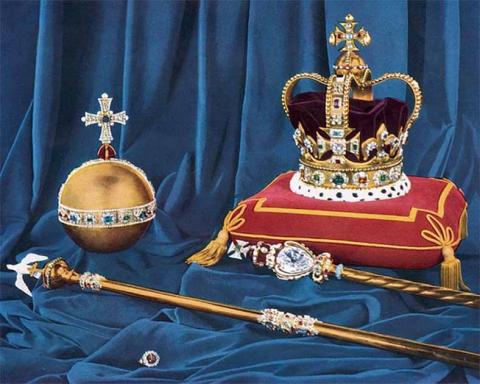Thomas Blood is an infamous Irishman known as the ‘Man Who Stole the Crown Jewels.’ The self-styled colonel lived during the 17th century and established his reputation as a rogue and trickster during the time when England was embroiled in a civil war. Blood cemented his place in history with his audacious attempt to steal the Crown Jewels. But what are the Crown Jewels of the United Kingdom?
The Crown Jewels
Guarded with utmost vigilance by the Yeoman Warders at the iconic Tower of London, the glittering assortment of royal regalia known as the Crown Jewels is the epitome of majesty, luxury, and power. Its history spans nearly a thousand years and is steeped in the traditions of coronation ceremonies and state rituals that leave onlookers spellbound. The Crown Jewels embody the very essence of regal splendor - a tangible symbol of sovereign magnificence that resonates with history, heritage, and sheer magnificence.
This is a collection of extraordinary items – from orbs, scepters, robes, medals, and crowns to gold and silver-gilt banqueting and altar plate. The oldest of these is the 12th-century spoon used for the sovereign's ritual anointing at the coronation, however most of the items were acquired from 1660 onward. Five of the most famous pieces in the collection include:
- The Imperial State Crown - worn by the monarch during the State Opening of Parliament, this ornate crown is adorned with 2,868 diamonds, including the famous Cullinan II diamond.
- The Sovereign's Scepter - a ceremonial rod that is carried by the monarch during the coronation ceremony. It is topped with the Cullinan I diamond, which is the largest clear-cut diamond in the world.
- The Queen's Orb - a symbolic representation of the monarch's role as head of state. This golden sphere is encrusted with jewels and surmounted by a cross.
- The St. Edward's Crown - the most historic of all the crowns, dating back to the 12th century. It is used only during the coronation ceremony and is adorned with precious stones and pearls.
- The Koh-i-Noor Diamond - one of the largest diamonds in the world, this magnificent stone has a long and storied history. It was presented to Queen Victoria in 1851 and is now set in the Queen Mother's Crown.
Turbulent History
These are just a few of the many remarkable pieces in the Crown Jewels collection, each with its own unique story and significance. As a collection, there have been some very exciting moments in the Crown Jewels’ history. For example, King John allegedly lost them in quicksand in 1216. They were also pawned at least a couple of times – when Edward III had to pay his troops during an overseas campaign and when Charles I's wife pawned them in Holland at the beginning of the Civil War.
But other royals have treasured the jewels, and during the Second World War they were hidden in a secret location. There have also been a few attempts to steal the Crown Jewels, the most famous being the attempted robbery by Colonel Thomas Blood in 1671, which you can find out more about in the video below and in the article ‘Thomas Blood: The Man Who Stole the Crown Jewels’ available in the March - April 2023 issue of Ancient Origins Magazine. Get it here!
Featured Image: St Edward's Crown, and the sovereign's orb, scepters, and ring, in 1952. First color photograph ever published of the regalia. Source: Public domain
By Wu Mingren




